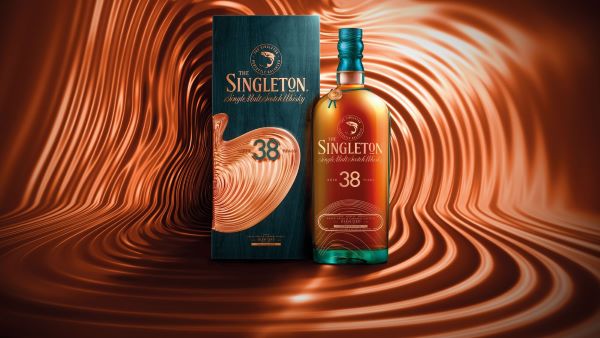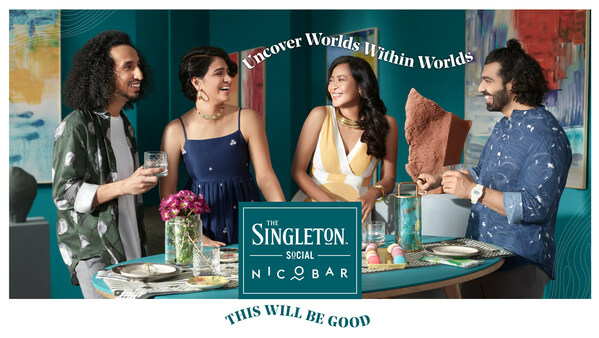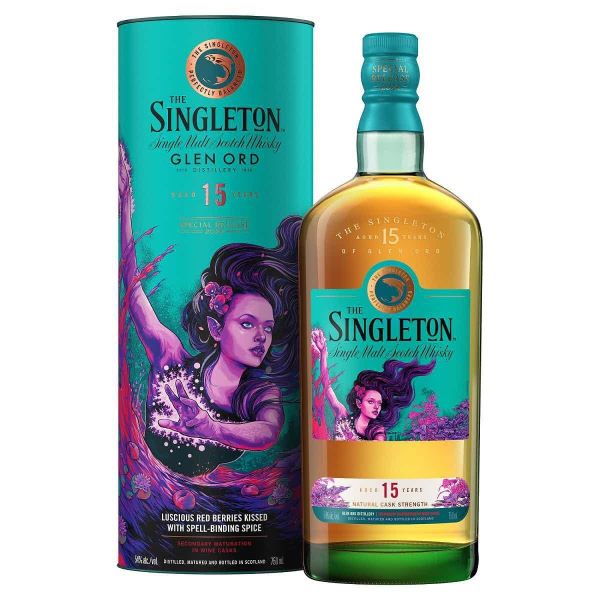Behind the Label – The Singleton
History was rewritten when Diageo launched an 'umbrella' brand, uniting three of its long-established single-malts – Glen Ord on the Black Isle, and Dufftown and Glendullan in Speyside. Ian Fraser peers under the umbrella of The Singleton …
The Singleton brand had previously been used for an Auchroisk single malt from 1975, but in June 2006 it was employed internationally and at scale for the first time. That was the month The Singleton of Glen Ord hit the Asian market – initially Taiwan. Two months later, Diageo released The Singleton of Dufftown in Europe, followed by The Singleton of Glendullan in North America in July 2008. The original plan was that each version would be exclusive to its particular continent.

Diageo gave all three a common look, with the Singleton name featuring prominently beneath a leaping salmon. Near equal prominence was given on the labels to the distilleries' names and age statements, at least initially. In each case, the core product was a 12-year-old single malt but there were also 15 and 18 year-old versions. Gradually other age-statements, and non-aged (NAS) versions joined them like the Singleton of Dufftown Sunray and Tailfire, both NAS and both named after salmon flies.
At first, Diageo positioned its new entry-level, 'challenger' brand as a 'gateway into single malts' – presenting it as an uncomplicated, easy-drinking, light malt, which was "unapologetically approachable" and "unapologetically enjoyed" and not intimidating to non-single-malt and non-whisky drinkers. In a review of The Singleton of Dufftown 12-year-old, which sells for £35 a bottle in the UK, whisky writer Neil Murphy wrote: "People sometimes like to portray Diageo as the 'Evil Empire', but they really know what they're doing when it comes to bottling single malt Scotch whisky. This is a Speyside I can get on board with. Fully flavoured and very satisfying."
However, in recent years Diageo may have muddied the waters slightly by launching several much more expensive editions, including a The Singleton of Dufftown 54-year-old at £25,000, and three whiskies in The Singleton of Glen Ord Epicurean Odyssey range, each aged from 38 to 40 years at between £2,000 and £2,300.

There is a degree of sleight-of-hand to the whole thing. Diageo was effectively seeking to characterise The Singleton as a bold and daring newcomer ready to shake up the slightly fusty global single malts market when it was actually a reinvention of three existing single malt brands, each of which had been around for over a century. Glen Ord was founded in 1838, Dufftown in 1895 and Glendullan in 1897. While most of their output was traditionally destined for blends such as Johnnie Walker, Dewar's and Bell's, they did occasionally appear as single malts.
It all makes The Singleton a slightly confusing label to peer behind. Almost all rival single malts, apart from one or two like Ian MacLeod's Smokehead and Inver House Distillers' AnCnoc brand, are named after the distillery where they are made.
Diageo had long been struggling to make a significant dent on the single-malts market, partly because it was late to the party, after its DCL predecessor prioritised blends such as Black & White, Dewar's, Haig and Johnnie Walker.
After Guinness acquired DCL in 1986, it sought to change this with initiatives like the launch of the Classic Malts (Cragganmore, Dalwhinnie, Glenkinchie, Lagavulin, Oban, and Talisker) in 1988, but these were never going to seriously challenge the might of William Grant & Sons' Glenfiddich or Pernod Ricard's Glenlivet, which had been successfully marketed internationally for decades.

This explains why Diageo was willing to double down on the Singleton concept. In November 2015, the company said it would be pushing The Singleton even harder into global markets and had overcome inhibitions about which malt should be sold in which continent, at the same time further unifying the brand by diminishing the size of distilleries' names on the labels.
Speaking to investors in New York in November 2015, Diageo's head of premium spirits David Gates said Diageo was now after explosive growth. He said The Singleton had done well to become the world's fifth-biggest selling malt in just nine years, but it was time to turbocharge its growth and "make it the world's number-one malt whisky brand."
Television ads for the Singleton since then – including Drop to Drop and Discover True Richness – have stressed its craft, modernity, flavour, fun, and drinking pleasure. Culinary collaborations have taken off since 2021, including tie-ups with the Michelin-starred chef Ollie Dabbous, the Scottish chef Tony Singh and New York pastry chef Eunji Lee – each paid to produce paired menus to celebrate Singleton-related developments. The Singleton also hosted a banquet in Fujian, China billed as "a lavish celebration of south-east Chinese culture, with a massive drone light show and fireworks illuminating the night sky" as part of its so-called "Reunite with True Richness" campaign.
But is The Singleton's push for growth paying off? It hasn't yet managed to topple Glenfiddich or Glenlivet, both of which now sell around 1.6 million nine-litre cases a year, compared to an estimated 800,000 for The Singleton. However, there are some positive signs. Speaking at a Scotch presentation last June, Diageo chief marketing officer Cristina Diezhandino said Singleton is "the fastest-growing single malt globally". While, at a strategy session in New York in November 2023, John O'Keefe, Diageo's president of Asia-Pacific added: "The Singleton is our number one malt in Greater China." He claimed that 25% of Singleton's net sales were now aged 15 years and above, having been just 10% in the year to June 2020, following 47% compound annual growth.

O'Keefe praised Diageo Taiwan for the launch of Singleton Golden Trésor 13-year-old, which he said had caught on in the island nation, enabling Diageo "to charge 40% more with just one additional year of ageing." That's premiumisation in action! Things seem to be less positive stateside, however. Speaking at a June 2023 event, Diageo CEO Debra Crew conceded that Singleton was underperforming in the US, saying "the heat and energy [of the brand] has really been generated over in Asia and has come into Europe."
One issue for the future may be the amount of spirit The Singleton's three distilleries can produce. Glendullan has an annual capacity of 3.6m litres of pure alcohol (LPA). At Dufftown it's 5.9m LPA, while at Glen Ord it's now up at 11.5m LPA following its 2014 overhaul. So, between them, the three distilleries can produce 21m LPA a year – broadly the same as what Glenlivet and Glenfddich each produce. However, if 12-year-old and above remain the core expressions, the true capacity of The Singleton will be somewhat less until 2026.
So, going forward, it seems the biggest obstacles that Diageo will face as it seeks to achieve its dream of usurping the Glens lie in production constraints and in winning over American consumers.

Ian Fraser is a financial journalist, a former business editor of Sunday Times Scotland, and author of Shredded: Inside RBS The Bank That Broke Britain.




